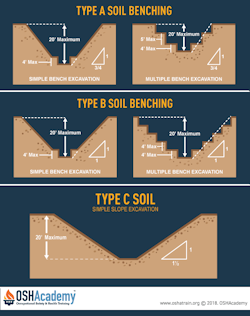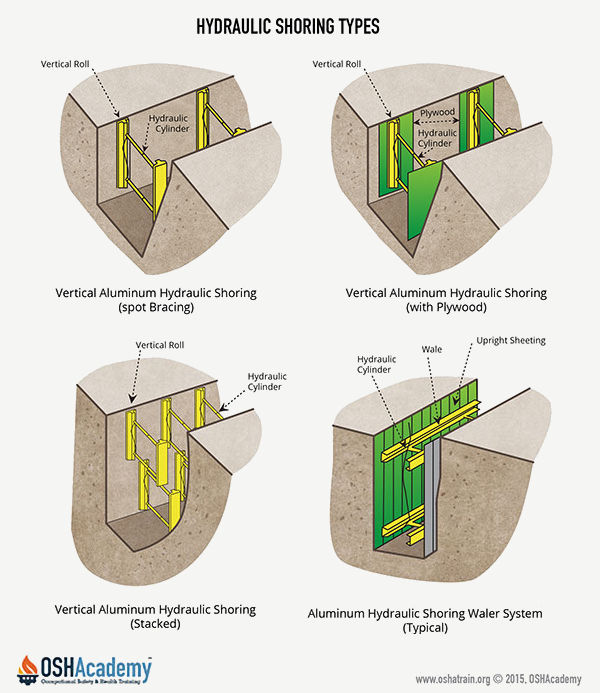Protective Methods and Systems
The basic methods for protection from cave-ins are sloping, benching, shoring, and shielding.
The method you should use depends on factors such as soil type and water content, excavation depth and width, the nature of the work, and nearby activities that could increase the risk of a cave-in.
The competent person has the responsibility for considering these factors and for determining the appropriate protective system. A registered professional engineer must design protective systems for all excavations that are more than 20 feet deep.
Benching is a method of protecting workers from cave-ins by excavating the sides of an excavation to form one or a series of horizontal levels or steps, usually with vertical or near-vertical surfaces between levels. There are two basic types of benching, simple and multiple. Benching cannot be done in Type C soil.
Shoring is the provision of a support system for trench faces used to prevent movement of soil, underground utilities, roadways, and foundations. Shoring or shielding is used when the location or depth of the cut makes sloping back to the maximum allowable slope impractical. Shoring systems consist of posts, wales, struts, and sheeting. There are two basic types of shoring, timber and aluminum.
Shielding protects workers by using trench boxes or other types of supports to prevent soil cave-ins. Designing a protective system can be complex because you must consider many factors: soil classification, depth of cut, water content of soil, changes caused by weather or climate, surcharge loads (e.g., spoil, other materials to be used in the trench) and other operations in the vicinity.
Knowledge Check Choose the best answer for the question.
5-7. What are the basic methods for protection from cave-ins?
You forgot to answer the question!


